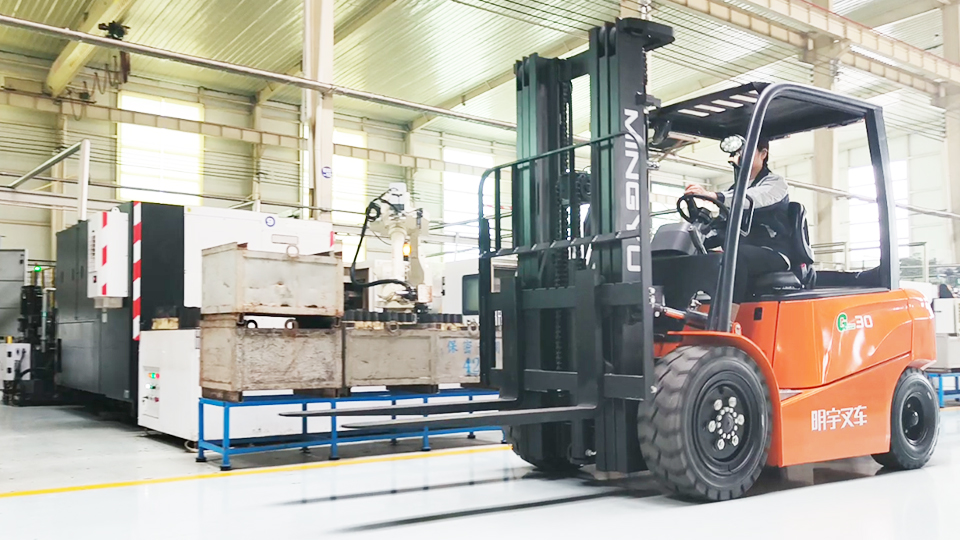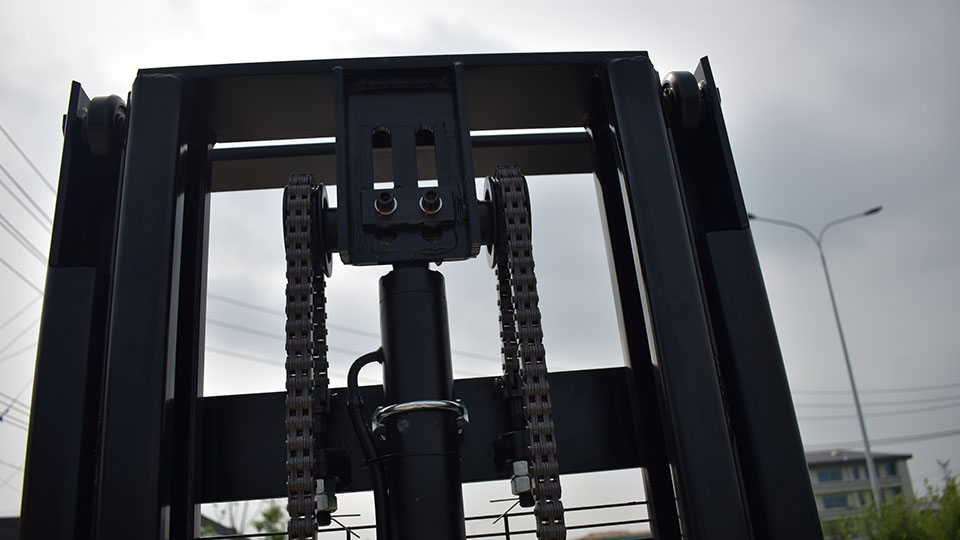
The Technical Pathway to Certification: How to Become a Certified Forklift Operator
Introduction: The Operational Imperative of Certification
Becoming a certified forklift, or Powered Industrial Truck (PIT) operator, is not a simple acquisition of skills but a rigorous process mandated by regulatory bodies like the Occupational Safety and Health Administration (OSHA) in the United States, and equivalent national and international standards (e.g., HSE in the UK, WHS in Australia). The process is governed by stringent technical criteria outlined in standards such as OSHA 29 CFR 1910.178 (Powered Industrial Trucks). Certification ensures the operator possesses the technical knowledge of machine mechanics, stability principles, and safe operating procedures necessary to mitigate the high risks associated with material handling—namely, tip-overs, dropped loads, and pedestrian incidents. This article details the structured, multi-phase pathway to achieving and maintaining full operational certification.

Phase I: Foundational Regulatory and Eligibility Requirements
The journey begins with meeting the fundamental prerequisites and understanding the legal framework that dictates who can operate a PIT.
1. Minimum Eligibility Criteria
Regulatory standards establish a clear baseline for operator qualification:
Age Requirement: While federal OSHA does not specify a minimum age, the Department of Labor often restricts operators under 18 years old from operating specific types of heavy or powered equipment in non-agricultural settings. Many employers and state regulations set the minimum age at 18 years old.
Driving Acuity and Health: Operators must possess the physical capability to safely operate the machinery. This includes adequate vision (often tested to a standard equivalent to a regular driving license), hearing, and motor function to manipulate controls and operate a foot brake. A pre-operational medical review or physical may be required by the employer.
Literacy and Comprehension: The ability to read and understand operating manuals, safety warnings, and load capacity charts (data plates) is non-negotiable. This is often tested during the written portion of the training.
2. The Mandate of OSHA 29 CFR 1910.178
The legal requirement for certification stems directly from the need to ensure a safe working environment. OSHA states that all operators must be "trained, evaluated, and certified" by the employer. Crucially, the standard does not permit "grandfathering" of experienced but uncertified operators.
|
Technical Component |
OSHA Requirement |
Operational Necessity |
|
Initial Training |
Must cover truck-related topics, workplace-related topics, and general safety principles. |
Provides the theoretical foundation to understand the physics of operation. |
|
Evaluation |
Operator's performance must be observed and rated in the workplace. |
Confirms the ability to safely translate theoretical knowledge into practice. |
|
Certification |
Employer issues a dated document that identifies the operator, evaluator, and the date of training/evaluation. |
Creates an official, verifiable record of compliance and due diligence. |
Phase II: Comprehensive Technical Training (The Classroom)
The technical training phase provides the theoretical backbone for safe and efficient operation. This segment must be conducted by a qualified person who possesses the requisite knowledge, training, and experience to train and evaluate the operator.
1. Core Technical Curriculum: Truck-Related Topics
This portion of the training delves into the mechanics and physics of the forklift itself, establishing a deep understanding of the machine’s limitations and capabilities.
A. Principles of Stability and the Stability Triangle
This is arguably the single most critical technical concept. Operators must master the theory of the Stability Triangle, the three-point area formed by the two front wheels and the center of the rear axle (or the single pivot point on 3-wheel models).
Load Moment: The operator must understand how the Load Moment (Load Weight $\times$ Load Center Distance) directly opposes the vehicle's stability.
Combined Center of Gravity (CCG): Training focuses on how load elevation, mast tilt, and lateral movement dynamically shift the CCG and why it must remain within the Stability Triangle's boundaries to prevent a longitudinal or lateral tip-over.
Data Plate Interpretation: Detailed training is provided on reading the data plate (or nameplate), which provides the maximum load capacity, load center distance, lift height, and truck weight specifications. Operators must be able to recognize when an unconventional load (e.g., an oversized pallet) effectively shifts the load center distance beyond the specified safe limit, thereby drastically reducing the safe lifting capacity.

B. Inspection and Maintenance Mechanics (Pre-Shift Checks)
Forklifts are subject to extreme mechanical stress. The training covers the mandatory pre-shift (or pre-operation) inspection, which involves a technical checklist of critical components:
Fluid Levels: Checking hydraulic oil, engine oil (for IC trucks), and battery electrolyte levels.
Mast and Fork Assembly: Inspecting for cracked welds, bent forks, loose chains, and functional hydraulic cylinder leaks.
Tires and Wheels: Checking for proper inflation (pneumatic tires), chunking (cushion tires), and damaged rims.
Braking and Steering Systems: Testing the functionality of both the service (foot) and parking brake systems, and verifying responsive steering.
2. Operational Procedures and Safety Systems
The classroom phase also covers the design and function of standard safety systems:
Active Stability Systems (SAS): For modern Toyota trucks, this includes training on the functionality of the System of Active Stability (SAS), which automatically monitors and attempts to control lateral stability and forward pitch by locking the swing axle or limiting mast angle.
Attachments: Understanding how adding attachments (e.g., drum clamps, carpet poles, fork extensions) alters the net capacity and requires consulting the revised capacity on the data plate or attachment decal. Attachments inherently shift the load center further forward, demanding a corresponding reduction in load weight.
Phase III: Practical Skills Development and Evaluation (The Hands-On)
Following classroom instruction, the operator must undergo supervised practical training, followed by a formal, practical evaluation in the actual workplace environment.
1. Hands-On Training and Maneuvering Exercises
Practical training is designed to build muscle memory and safe habit patterns. It must be conducted on the specific type of truck (e.g., Class 1, 3, 4, 5) the operator will use and in a representative setting that mirrors the actual work environment.
|
Practical Skill |
Technical Objective |
Safety Focus |
|
Starting/Stopping |
Smooth acceleration and deceleration to prevent load shift. |
Eliminating "jackrabbit" starts, which can cause the CCG to shift rearward out of the Stability Triangle. |
|
Steering Control |
Mastering the dynamics of rear-wheel steering (pivot steering). |
Awareness of rear-end swing during turns to protect pedestrians and structures. |
|
Load Engagement |
Approaching the load square, inserting forks fully, and ensuring the load is centered laterally and longitudinally. |
Preventing partial load engagement, which creates a dangerous, non-standard load center. |
|
Traveling with a Load |
Carrying the load as low as possible (4–6 inches from the floor) and tilting the mast fully back. |
Minimizing the risk of lateral tip-over (load low) and securing the load against longitudinal shift (mast tilt). |
|
Stacking/Unstacking |
Precision control of the hydraulic lift/lower and tilt functions. |
Maintaining a clear line of sight, approaching stacks slowly, and avoiding aggressive tilt at height. |
|
Ramp and Grade Operation |
Traveling with the load pointed uphill at all times. |
Utilizing the mass of the load/counterweight to maintain traction and prevent runaways (always using the low gear on a descent). |
2. The Formal Practical Evaluation
The evaluation is the culminating exercise where the qualified person observes the operator performing all typical duties. This is a pass/fail assessment covering technical compliance with the safety principles learned.
Criteria: The evaluator must check for proper application of skills such as checking the load for stability before lifting, correctly positioning the forks, maneuvering through obstacles without incident, and demonstrating controlled stops and starts.
Workplace Specifics: The evaluation must occur in the work setting, accounting for specific hazards, such as narrow aisles, floor composition (smooth concrete vs. gravel), and traffic patterns. OSHA emphasizes that training is incomplete without this site-specific component.
Phase IV: Certification and Recertification Maintenance
Certification is not a permanent status; it is a temporary qualification that must be periodically renewed to ensure continued proficiency and compliance with evolving standards.
1. Issuance of Certification
Upon successful completion of the formal written test (minimum passing score usually 70% to 80%) and the practical evaluation, the employer must issue the certification card or document. This certification must include:
The Name of the Operator.
The Date of the Training and the Evaluation.
The Identity of the Qualified Evaluator.
The Specific Type(s) of PIT the operator is certified to run (e.g., Class 1, 4, 5).
2. Recertification Triggers (The Three-Year Rule)
The official certification period is a maximum of three years. However, the operator must be recertified earlier if any of the following events occur:
Three-Year Expiration: The mandatory renewal period is reached.
Unsafe Operation: The operator is observed operating the PIT unsafely (e.g., speeding, near-miss incident). This triggers immediate refresher training and re-evaluation.
Accident or Near-Miss: The operator is involved in an accident or near-miss incident. This signifies a lapse in safety comprehension or application.
Workplace Change: Introduction of a new, potentially hazardous operating condition (e.g., changes to racking systems, new ramps, uneven floors).
New Equipment Type: The operator is assigned to a different type of truck (e.g., moving from an electric cushion-tire truck to a diesel pneumatic-tire truck).
The goal of recertification is to verify that the operator’s technical skills have not deteriorated and that they have adapted to any changes in the equipment or the work environment.
Conclusion: The Professional Responsibility of Operation
The path to becoming a certified forklift operator is an intensive process anchored in technical education and practical application, ensuring compliance with OSHA 29 CFR 1910.178. It progresses systematically from regulatory eligibility to foundational technical principles (stability, capacity), hands-on skills development (precision maneuvering, load management), and finally, to formalized certification and mandatory recertification.
The operator is entrusted with the responsibility of controlling a piece of machinery where the machine’s total operating mass (ranging from approximately 6,000 lbs for a small IC truck up to 40,000 lbs or more for a heavy-duty model) is often many times greater than the load it is designed to lift. This mass, combined with the dynamics of rear-wheel steering and a high center of gravity, makes the forklift inherently unstable under improper operation. Therefore, certification is the professional validation that the operator understands these technical dynamics, has mastered the controls, and is fully prepared to execute their duties within the stringent safety parameters established by regulation and engineering design. The certified operator acts as the final, critical safety system, mitigating risk in the dynamic environment of modern material handling.
Name: selena
Mobile:+86-13176910558
Tel:+86-0535-2090977
Whatsapp:8613181602336
Email:vip@mingyuforklift.com
Add:Xiaqiu Town, Laizhou, Yantai City, Shandong Province, China